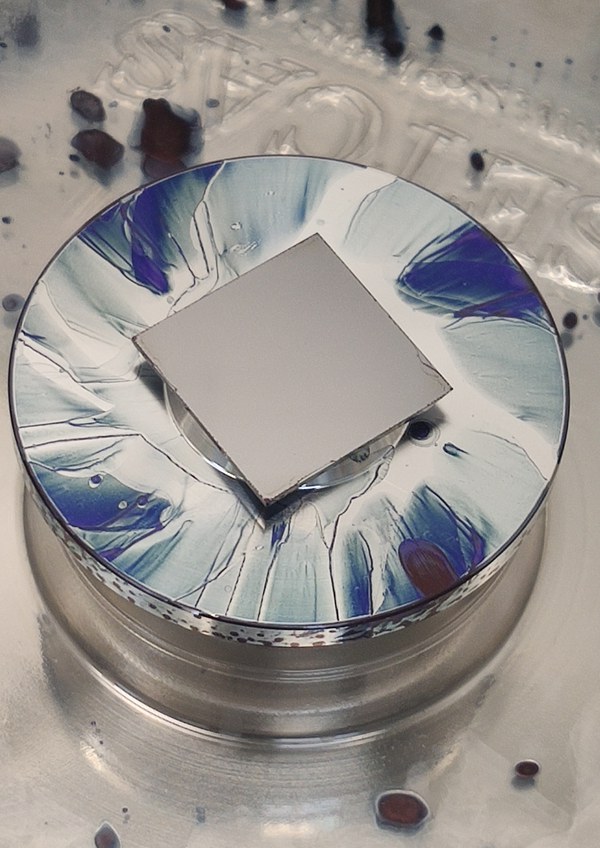Thin Films and Interfaces
Owing to intrinsic size effects and reduced dimensionality, thin films with material thicknesses in the atomic, nanometre and sub-micrometre range can exhibit properties that differ greatly in their mechanical, metallic or optical properties from those of the corresponding bulk material. For example, certain amorphous or crystalline phases can be stabilised in thin layers at room temperature, which only exist in the bulk material under special pressure and temperature conditions. Novel physical effects can also be observed at interfaces between the individual layers.
Depending on the application, a number of physical and chemical production methods allow us to combine a wide variety of materials into artificial layer systems in a targeted manner and with atomic precision and to analyse, understand and ultimately optimise their special properties. Our research activities focus on layer systems from the fields of energy generation (e.g. organic solar cells), transport (e.g. superconductivity), energy storage (thin-film metal hydrides) or the more efficient use of energy (e.g. multiferroics).

To characterise our film systems, we use both the variety of scattering methods used in our research on nanostructured interfaces and complement these with X-ray and polarised neutron reflectometry (PNR) to analyse in detail the density, roughness/interdiffusion, film thickness and magnetic properties of the films. We have the expertise to employ PNR as an in situ method during thin film growth, which allows us to explore the development of these sample parameters as a function of the gradual addition of material to the exact same sample.
Contact:
Dr. habil. Wolfgang Kreuzpaintner
Publications:
Polarized phonons carry angular momentum in ultrafast demagnetization, S. Tauchert, M. Volkov, D. Ehberger, D. Kazenwadel, M. Evers, H. Lange, A. Donges, A. Book, W. Kreuzpaintner, U. Nowak, and P. Baum, Nature 602, 73-77 (2022).
Reflectometry with Polarized Neutrons on In Situ Grown Thin Films, W. Kreuzpaintner, A. Schmehl, A. Book, T. Mairoser, J. Ye, B. Wiedemann, S. Mayr, J.-F. Moulin, J. Stahn, D. A. Gilbert, H. Gabold, Z. Inanloo-Maranloo, M. Heigl, S. Masalovich, R. Georgii, M. Albrecht, J. Mannhart, and P. Böni, Phys. Status Solidi B, 2100153 (2021).
Two Dimensional Magnets: Forgotten History and Recent Progress towards Spintronic Applications, D. L. Cortie, G. L. Causer, K.C. Rule, H. Fritsche, W. Kreuzpaintner, and F. Klose, Adv. Funct. Mater. 30, 1901414 (2020).
Indications for Interfacial Dzyaloshinskii-Moriya Interaction at the Pd/Fe Interface, Studied by In Situ Polarized Neutron Reflectometry, S. Mayr, J. Ye, J. Stahn, B. Knoblich, O. Klein, D.A. Gilbert, M. Albrecht, A. Paul, P. Böni, and W. Kreuzpaintner, Phys. Rev. B 101, 024404 (2020).
